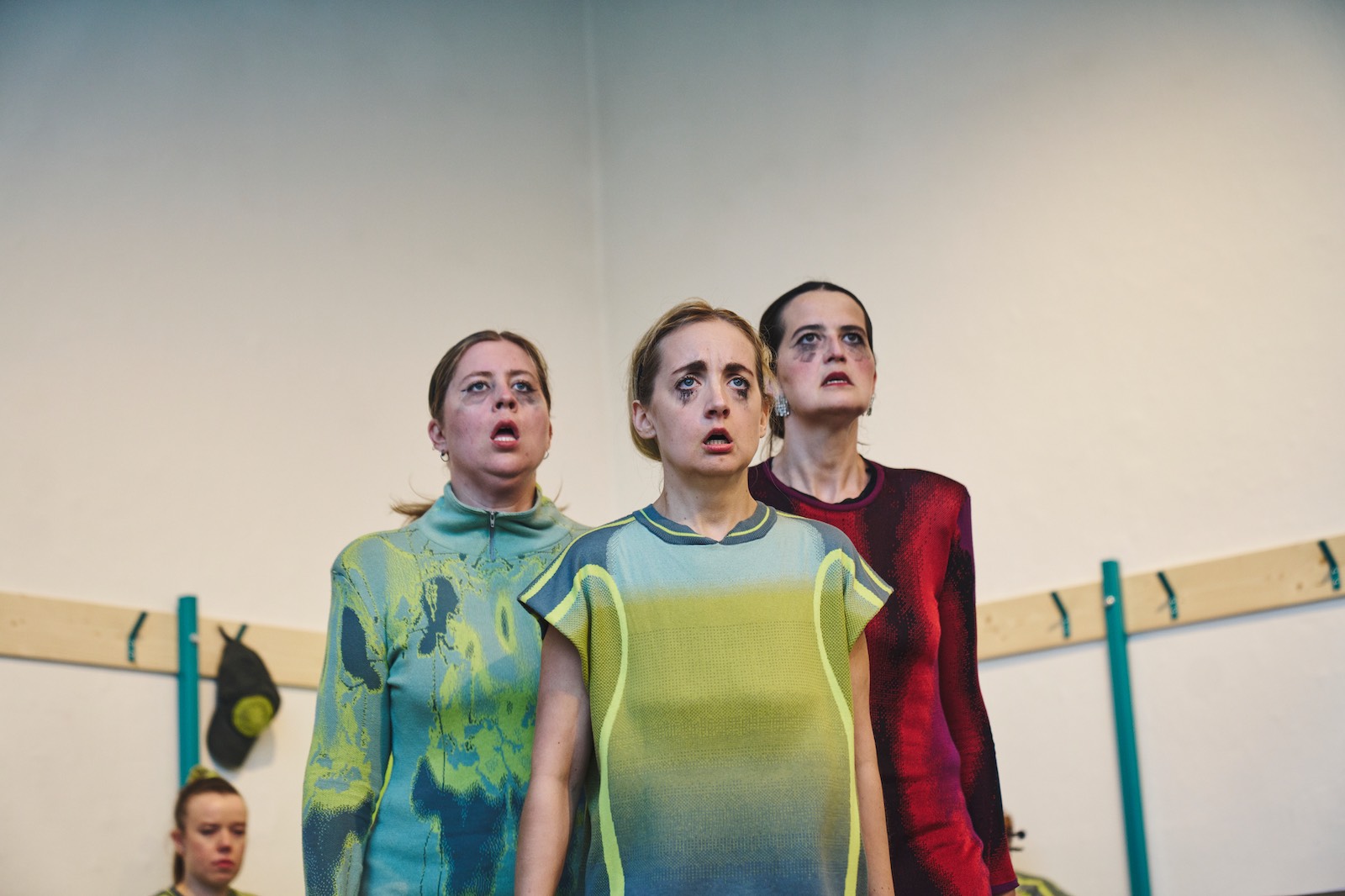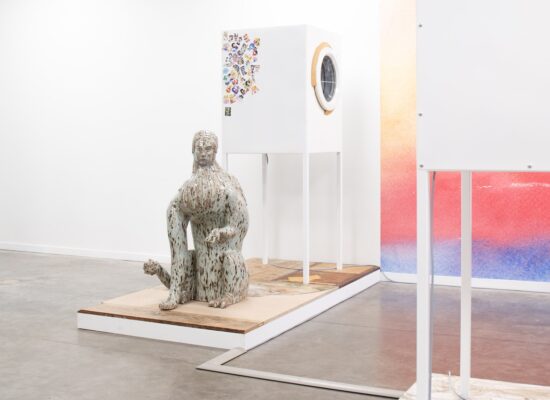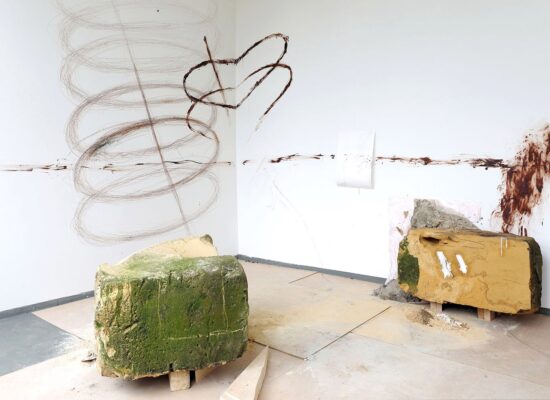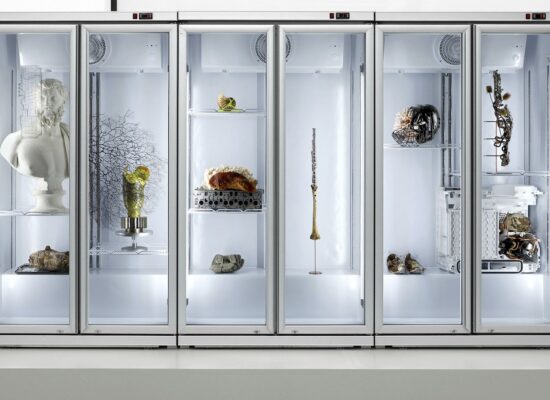How do you describe your own art practice?
My work is, at its core, based on classical music and opera. I have been involved in music my whole life alongside my visual art practice, and it always finds its way into my work in some form. I mainly work with performance and video, but I also enjoy crafting and learning new skills, especially when it comes to textiles. I think that lies in my upbringing, having strong female characters in my life that had to mend the family together both physically and metaphorically. My friends later on also played a role in shaping this perspective. This has become the driving force in my work. I want to create stories of togetherness and female empowerment as well as using art as a medium of communication sparked by strong feelings of a mix of sadness and humour, to ask questions about society, care and systematic control.
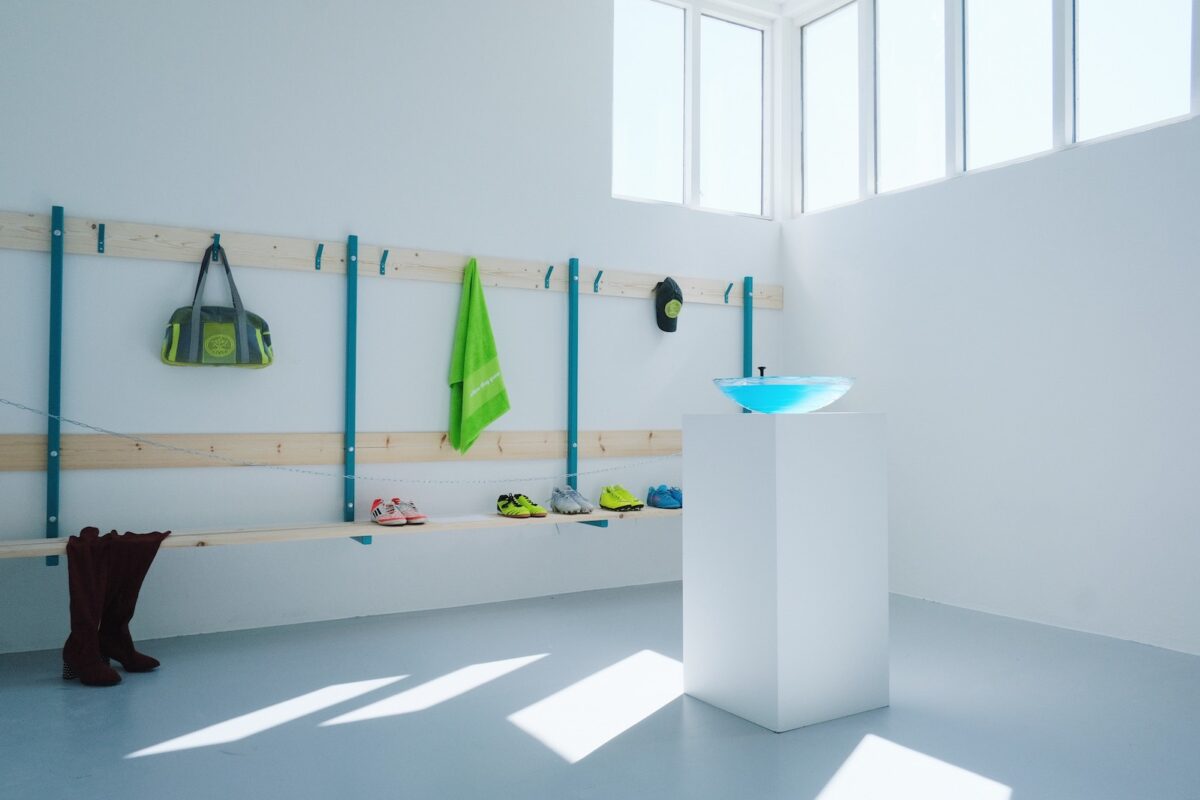
Installation: Machine knitted textiles, wood, metal, printed towels, pre-workout water fountain, football gear
Skjóta, solo exhibition, Ásmundarsalur, IS.
Photo: Olivia Houston
Which question or theme is central in your work?
I would say my work explores power structures, gender, community, and climate anxiety through voice, movement and sound, often in relation to subcultures, sports phenomena and/or folk tales. In my work and performances I often merge fictional storytelling with autobiographical reflections, using humor, intimacy, and operatic tools to engage audiences through workshops or semi-interactive formats. My current research deals with aging, reproductive trauma, and the search for togetherness in a fragmented world.

Full HD video (12:00 min) / Machine knitted textiles, metal
Prospects, Art Rotterdam, Rotterdam, NL. 2025
Photo: Tommy Smits
What was your first experience with art?
Looking back, I’ve always been around some kind of art, even though I never imagined myself as a visual artist. What comes to mind now is my first memory of a theater play. My mom took part in a local countryside theater production of an Icelandic musical about the Danish Jørgen Jørgensson who tried to be the king of Iceland against the will of the Danish king for three months the summer of 1809 without any success, but Iceland was a Danish colony until 1944. I must have been around four. I mostly remember the festive atmosphere, how happy the music and singing made me and that it was sunny outside. I used to sing all the time as a child and draw a lot. I’d get a lot of crazy ideas and make things out of trash. I especially remember making dogs out of cardboard and dragging them everywhere with me. I grew up in a very rural place so going to museums or such was not an option.
Later after moving to Reykjavík I remember myself knitting caterpillars most weekend mornings while watching the cartoons, and drawing spiders in roller skates entering the apartment building elevator as I overcame my fear of them. I somehow connect my first memory of visual arts to a t-shirt my mom had bought on a trip to Spain with a work by Joan Miro. There was something that fascinated me about its colors and composition, but it is ironic, isn’t it, that the first memory of a painting is of a print on a worn-out, mass-printed t-shirt.
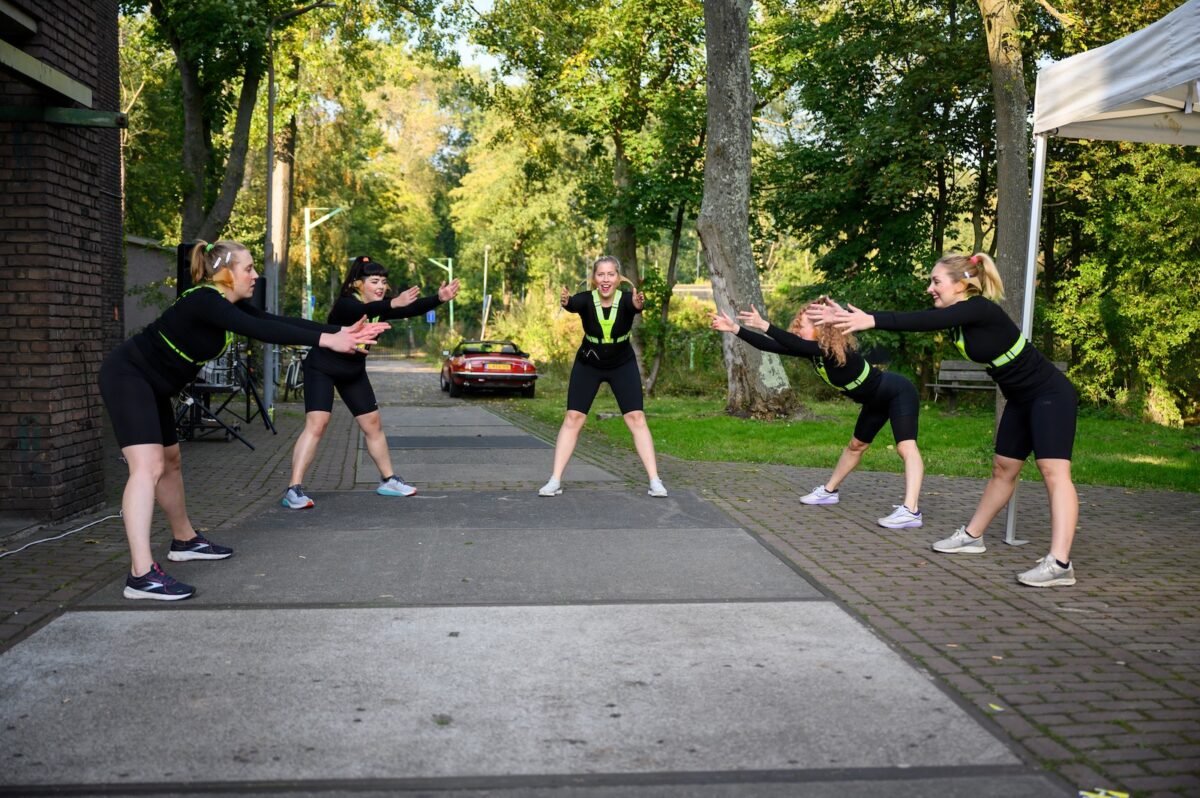
Performance (25:00 min)
HetHem, Amsterdam, NL.
Photo: Tom Janssen
What is your greatest source of inspiration?
I’d say the greatest is just people in general, but also being in nature to experience a sense of smallness. Most of my inspiration for the music I compose I get from sounds all around. The ocean, my broken toilet, or the train station bell, different frequencies that form strange and often incredible harmonies. I get my best ideas when I feel the most free and relaxed, when I go for runs, cycle around the city or am trying to fall asleep. Conceptually however, I feel the most inspired by the people closest to me and artists I look up to. I think what fascinates me the most about the art world is not the art itself, but the people and hearing their stories and how they understand the works.

Tufted textile pillow
Ísafjörður Art Museum, Ísafjörður, IS.
Photo: Haukur Sigurðsson
What do you need in order to create your work?
My studio is essential to me, it can be difficult when working as a freelance artist to navigate your time and work but going to the studio allows me to have the time and space to create in peace, either at my desk, moving and singing in the space, tufting a wall work or curling up in my studio couch with a book or a film for inspiration. For me, it is quite holy. For example, I have found that I feel most free when I work alone in a space or with someone I really know unless it is later in the process, but then I work a lot with other people and performers.

Full HD video (12:00 min)
Vitamin D, Reykjavík Art Museum, Reykjavík, IS.
Photo: Sigrún Sveinsdóttir
What work or artist has most recently surprised you?
Recently I have been looking for inspiration among other performance artists around me, especially among other femme or non-binary artists that are not yet as established. Apart from that, I saw a great performance recently at the Venice Biennial by Gabrielle Goliath where a group of female opera singers held the same tone continuously for just under an hour forming a queue as they passed the tone to the next stepping down from a platform and returning to the line. I was also extremely fascinated by La Horde’s Age of Content that I saw last year, a definite recent highlight along with finally seeing Katie Mitchell’s production of Pelléas et Melisande at Festival d’Aix-en-Provence.
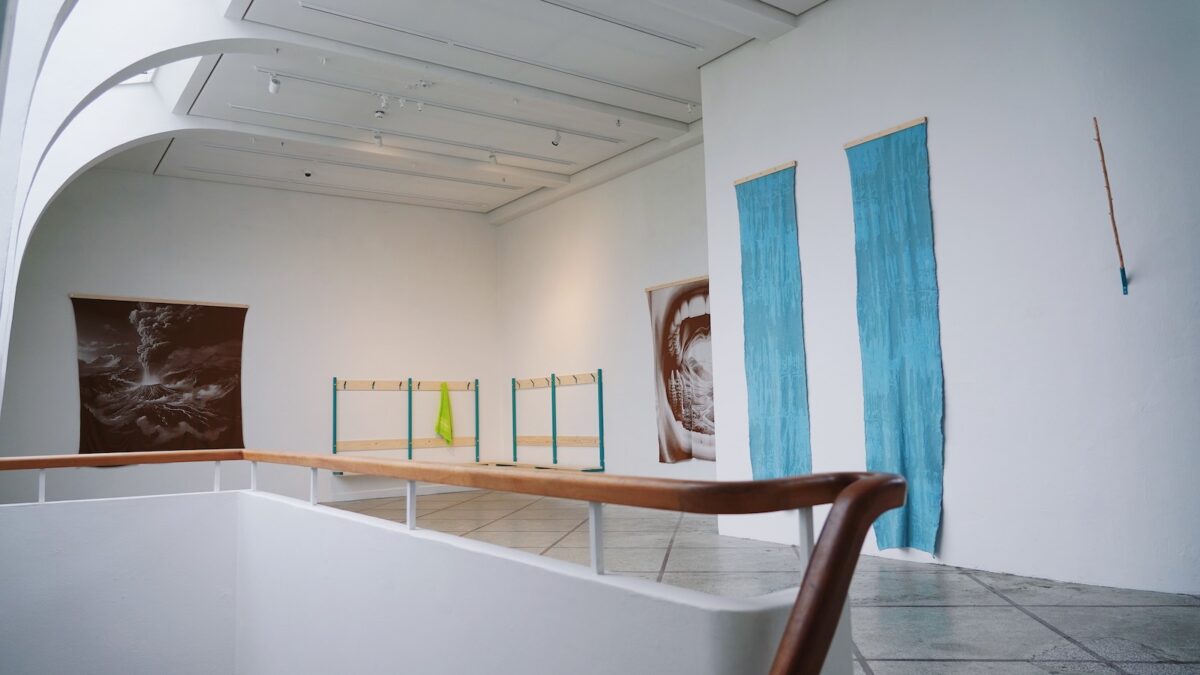
Installation: Machine knitted textiles, wood, metal, printed towels, pre-workout water fountain, football gear
Skjóta, solo exhibition, Ásmundarsalur, IS.
Photo: Sigrún Sveinsdóttir
